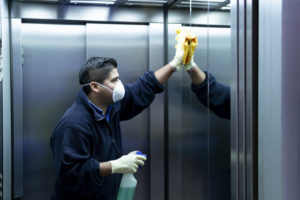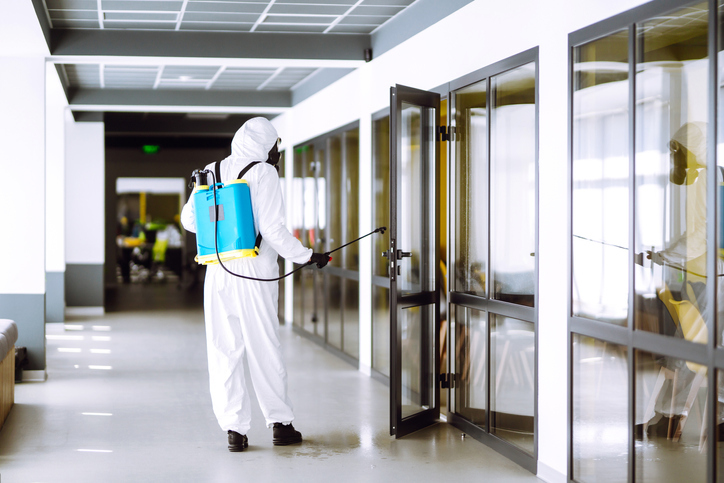Disinfectants
You get a call that someone has tested positive for COVID-19. What do you do next? How do you disinfect the building? The answer is pretty much the same as if you have someone come onsite with any other nasty bug – Norovirus (most common to hit cruise ships hard), Clostridiodes difficile (C. diff), MRSA or Rhinovirus. I know what you are thinking, “Great, but that doesn’t answer my question.” To answer your question, we need to break the answer into three separate parts – product, process, and application.
Types of Cleaning Products & How to Make Them
The first question we need to look at is product. What chemicals do I use? There are three types of cleaning chemicals – green chemicals, sanitizers, and disinfectants. Green Chemicals: By definition, a green chemical is designed to break down hazardous materials like household pollutants, but cannot kill biological hazards like bacteria or viruses, or else it is not green, so we will ignore these for this discussion.
Sanitizers
A sanitizer is defined as a product that will remove harmful bacteria from a surface but will not harm you if ingested. Sanitizers are most used for food processing areas, especially in kitchens and will kill 99% of viruses and bacteria with a simple spray and wipe. You can make a simple sanitizer by putting one tablespoon of bleach in gallon of water.
Disinfectants
A disinfectant is defined as a product to “inhibit growth of harmful organisms.” These are similar to sanitizers as they can be made from the same base chemical; but are different strengths. You can make bleach into a simple disinfectant by adding a third of a cup to a gallon of water. That said, you want to make sure the base chemical you are using will kill the virus or bacteria you want to remove. As an example, bleach will kill Coronavirus, but studies are mixed as to whether it will kill HIV and Hepatitis.
Now let us look at the process of applying these chemicals.
How the Cleaning Process Differs by Product Type
The concentration of product, or the amount of chemical dissolved in a solvent like water, and time the mixture needs to remain on a surface to be effective make the difference when it comes to sanitizing vs disinfecting. If you are sanitizing, you would spray a weaker chemical on a surface and immediately wipe it. This is because sanitizing’s goal is to remove approximately 99% of bacteria and viruses from that surface.
When it comes to disinfecting you want to remove 100% of bacteria and viruses from that same surface. You do that by spraying a stronger chemical and allow it to dwell for 10 minutes to chemically poison anything that is alive on the surface. Then remove the cleaning product by wiping it off.
You want to remove the disinfectant after 10 minutes because these products can introduce nasty chemicals to an environment. This is also why It is also not a process you want to do for all surfaces. For example, you would not want to disinfect a surface that would touch anything going into someone’s mouth. Kitchen surfaces and children’s toys are great examples of surfaces should not be routinely disinfected without rinsing afterward.
How to Apply Sanitizers & Disinfectants
Finally, we want to look at the application process. When spraying a chemical, you need it to evenly coat a surface as to not miss any surface area. There are three different ways to apply a disinfectant.
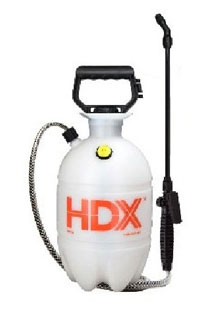
Method 1: Handheld Applicators
The first method is using a simple handheld trigger sprayer or pump up sprayer to apply the cleaning product to surface.
This method allows you to reach hard to reach areas and requires lighter, less expensive equipment than the other methods, but results in unevenly sized droplets that waste product. As a result, it is better suited for applying sanitizers than disinfectants.
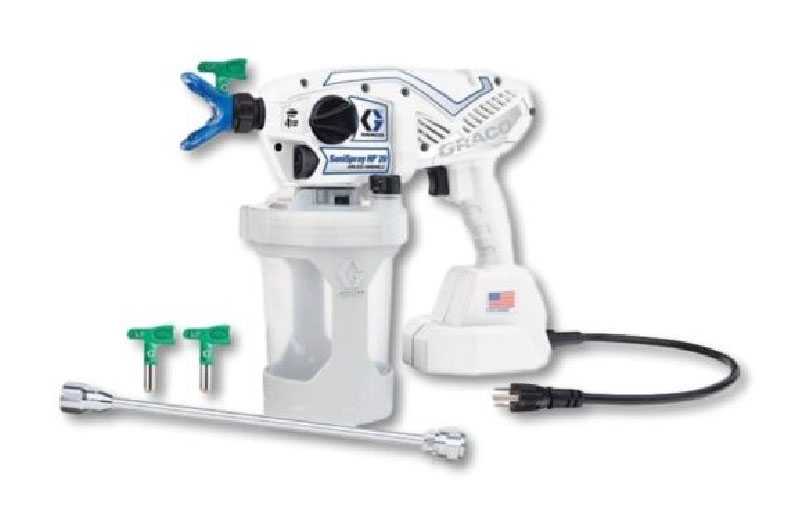
Method 2: Use an Atomized Sprayer
The second style is an atomizer sprayer, which is often used as a fogger in insecticide applications. Sprayers come in several different styles, most commonly seen are either small handheld units (that are powered with a battery or plugged in).
Sprayers are superior to hand held pumps in terms of uniformly applying a chemical to an area, because they create small, even sized droplets. However, they aren’t nearly as effective in cleaning hard to reach places.
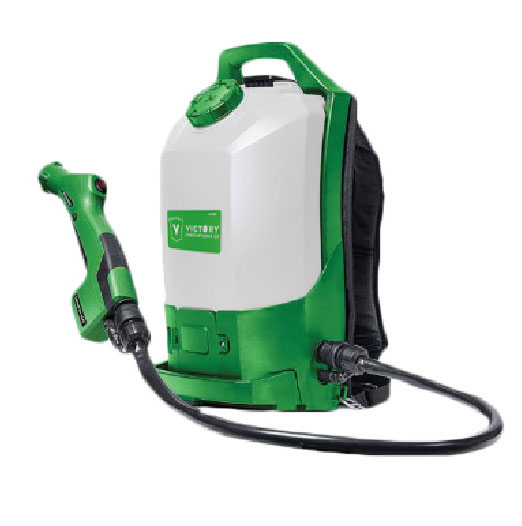
Method 3: Use an Electrostatic Spray Gun
The final type of spraying is electrostatic. An electrostatic spray gun atomizes the particles and then negative charges the coating particles to help them stick to hard to reach surfaces (like under a desk or counter). There is also minimal forward velocity when spraying allowing time for particles to cover surfaces.
While electrostatic spray guns are more expensive than hand-held pumps, their ability to coat and treat all surfaces evenly makes them the best for ensuring harmful viruses and bacteria are eliminated from public workspaces.
In Summary
Whether you do it yourself or are considering outsourcing your cleaning needs, you want to make sure whoever is responsible is using the best products, process, and equipment available. Verify they are using a disinfectant, not a sanitizer, and make sure it kills the virus or bacteria you are looking to kill. You can do this by checking the label as disinfectants will have a printed kill claim.
Lastly, whether you have a case of COVID-19, or suspect your surfaces have been contaminated by any other nasty bug, never forget to give your disinfectant ten-minute’s time to dwell. The most common error we find in cleaning is not allowing for the required dwell time for the product.
At Blink Facility Solutions we use chlorine dioxide as our main disinfectant (EPA Registration No. 74986- 1). There are a variety of brand names that we use – Vital Oxide, SNiPER, Selectrocide to name a few. We use it for a variety of reasons vs chlorine (bleach) and traditional Quat disinfectants (Clorox Wipes and many other products). Chlorine dioxide is safer than other disinfectants (it is used as a food sanitizer if diluted), will not harm fabrics or carpets, not an asthmatic trigger, does not leave a residual odor and can remove unsavory odors (car dealerships use it to remove bad smells in cars). We apply the disinfectant with an electrostatic sprayer. If you have an active case of Covid-19 or any other virus or bacteria we will then wipe down surfaces to remove as much organic material as possible (after waiting the required 10 minutes). Please call us if we can help you.
Links –
Backpack electrostatic sprayer
https://www.youtube.com/watch?v=yPjlO9RDihAUpright electrostatic sprayer
https://www.cloroxpro.com/products/clorox/total-360/